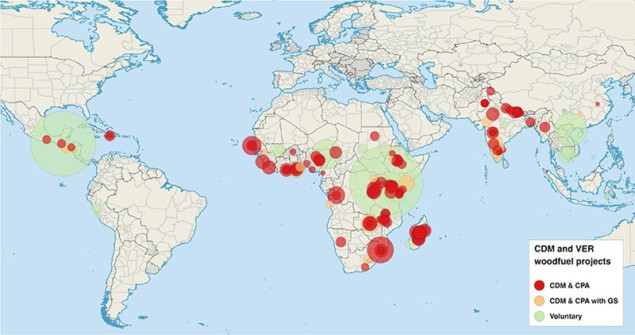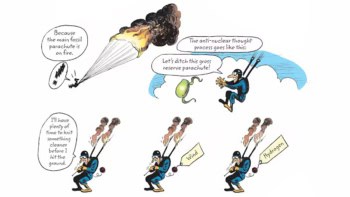
The sustainable provision of wood fuels – a key energy source for an estimated 2.8 billion people worldwide – depends on the replenishment of biomass following harvesting. When the demand for logs and charcoal outstrips supply, this balance is upset. A new analysis provides a more detailed picture of hotspots that require intervention.
“By mapping woody biomass supply and demand across a given landscape and adding layers such as elevation, roads, waterways, and other geographic features that help determine accessibility, we get a better sense of where people are likely to harvest wood to satisfy either subsistence or commercial demand,” Rob Bailis of the Stockholm Environment Institute told environmentalresearchweb. “This provides a more accurate approximation of locations where supplies are sufficient, as well as where demand is likely to outstrip supply leading to degradation.”
The team refers to its approach as Woodfuel Integrated Supply/Demand Overview Mapping, or WISDOM for short.
The researchers used the mapping method to indicate wood fuel hotspots in East, West and Southern Africa, as well as across South Asia, where it’s thought that nearly 300 million people live with acute wood fuel scarcity. They reported their latest results in Environmental Research Letters (ERL) .
The work also puts the spotlight on the fraction of non-renewed biomass, which indicates the percentage of woody biomass that is unsustainable, following an analysis of nearly 300 wood fuel projects.
The value of this percentage affects the estimated size of carbon offsetting opportunities. The team proposes that project developers and investors recalibrate their expectations by adopting more conservative values for this key fraction. “This process is already underway as the Executive Board of the Clean Development Mechanism is planning to utilize our default values in future projects,” added Bailis.
Inputting non-renewed biomass values derived from spatially explicit wood fuel demand and supply imbalances into calculations, the scientists found that emissions reductions are 41%–59% lower than estimates based on original carbon offset project design documents.
Rather than choking off activity, the researchers hope that their study will put projects to finance clean and efficient stoves or fuel switching interventions on an even more robust footing. “Well-designed projects can still reap tangible benefits – just at a slower rate than previously thought,” said Bailis.
This research was funded by a grant from the Global Alliance for Clean Cookstoves.



